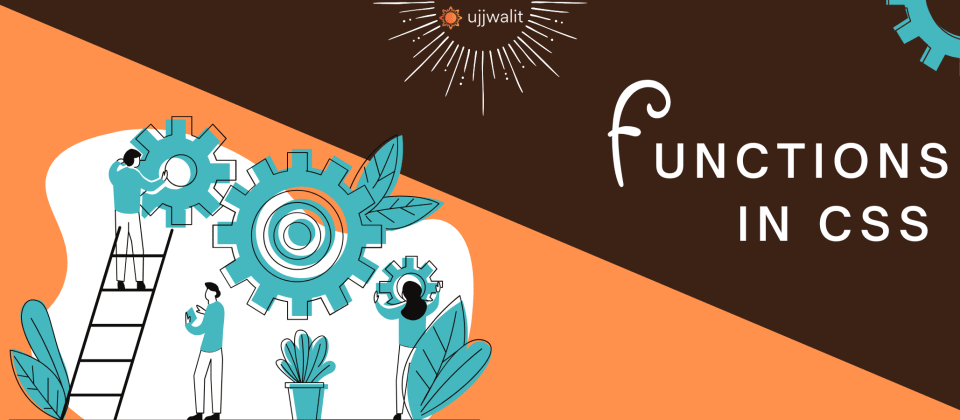
Functions in CSS
Hey Devs!
CSS has evolved far beyond static styling. Today, it’s a dynamic language capable of complex calculations, fluid responsiveness, and programmatic logic—all thanks to CSS functions. These powerful tools allow developers to create adaptable designs, maintainable codebases, and engaging user experiences without relying on JavaScript. Let’s explore the functions reshaping modern web design.
Why CSS Functions Matter
CSS functions bridge the gap between design and logic. They enable:
- Fluid Responsiveness: Elements that adapt to screen sizes without rigid breakpoints.
- Simpler Code: Fewer media queries and JavaScript dependencies.
- Consistency: Centralized control over design systems.
- Creative Effects: Complex visuals without image editors.
Layout & Sizing Functions
1. calc(): Mathematical Flexibility
calc() mixes units (pixels, percentages, viewport units) to solve layout challenges.
Why Use It:
- Create spacing that adapts to screen size:
.sidebar { width: calc(300px + 10%); } - Center elements with dynamic offsets.
2. clamp(): Responsive Harmony
clamp(min, ideal, max) sets bounds for fluid scaling.
Why Use It:
- Typography:
h1 { font-size: clamp(1.5rem, 4vw, 3rem); } - Images: Prevent awkwardly stretched or compressed assets.
3. min() & max(): Intelligent Constraints
Enforce limits while preserving flexibility.
Why Use Them:
- Prevent content from overflowing containers:
.container { width: min(100%, 1200px); } - Ensure touch targets are accessible:
button { padding: max(1rem, 2dvh); }
4. aspect-ratio(): Proportional Integrity
Maintain element proportions across devices.
Why Use It:
- Responsive video embeds:
.video { aspect-ratio: 16/9; }
Color & Styling Functions
1. hsl() & hsla(): Intuitive Color Control
Define colors via hue, saturation, and lightness.
Why Use Them:
- Easily create color variations:
:root { --primary: hsl(200 100% 50%); --primary-dark: hsl(200 100% 30%); }
2. rgba(): Transparency Made Simple
Add opacity to RGB colors.
Why Use It:
- Subtle overlays:
.overlay { background: rgba(0 0 0 / 0.7); }
3. linear-gradient() & radial-gradient(): Depth & Texture
Craft smooth color transitions.
Why Use Them:
- Modern buttons:
.button { background: linear-gradient(45deg, #ff6b6b, #4ecdc4); }
Advanced Functions
1. var(): CSS Custom Properties
Reference reusable values defined in :root or elements.
Why Use It:
- Theming:
:root { --primary: #4ecdc4; --spacing: 1rem; } .card { background: var(--primary); padding: var(--spacing); }
2. url(): External Resources
Embed images, fonts, or masks.
Why Use It:
- Optimized assets:
.hero { background-image: url("image.webp"); }
3. attr(): Data-Driven Designs
Pull values from HTML attributes into CSS.
Why Use It:
- Dynamic tooltips:
<div data-tooltip="More info">Hover Me</div>div::after { content: attr(data-tooltip); }
4. filter(): Visual Effects
Apply blur, brightness, and shadows.
Why Use It:
- Image adjustments:
.image { filter: blur(4px) brightness(0.8); }
Best Practices
-
Prioritize Readability:
/* Bad */ width: calc(100%-2rem); /* Good */ width: calc(100% - 2rem); -
Combine Functions:
.hero { padding: clamp(1rem, 5dvh, 3rem); } -
Test Browser Support: Use tools like Can I Use for functions like
clamp(). -
Avoid Overengineering: Use media queries when functions complicate logic.
Here's a concise reference table for CSS functions:
| Function | Purpose | Syntax Example | Best For |
|---|---|---|---|
calc() |
Math operations with mixed units | width: calc(100% - 2rem); |
Fluid layouts, dynamic spacing |
clamp() |
Fluid scaling within bounds | font-size: clamp(1rem, 4vw, 2rem); |
Responsive typography, adaptive UIs |
min() |
Enforce maximum value | width: min(1200px, 90%); |
Constrained containers |
max() |
Enforce minimum value | padding: max(1rem, 5vh); |
Accessible touch targets |
aspect-ratio |
Maintain element proportions | aspect-ratio: 16/9; |
Media embeds, uniform grids |
hsl()/hsla() |
Color definition with alpha | hsla(200 100% 50% / 0.8); |
Theming, dynamic color systems |
var() |
Reference CSS custom properties | color: var(--primary); |
Design systems, theme switching |
linear-gradient() |
Create color transitions | linear-gradient(90deg, red, blue); |
Backgrounds, decorative elements |
radial-gradient() |
Circular color transitions | radial-gradient(circle, red, blue); |
Spotlight effects, circular elements |
url() |
Reference external resources | background: url("image.jpg"); |
Assets, fonts, masks |
attr() |
Use HTML attributes in CSS | content: attr(data-tooltip); |
Dynamic content generation |
filter() |
Apply visual effects | filter: blur(5px) brightness(1.2); |
Image adjustments, UI enhancements |
drop-shadow() |
Vector-based shadow effects | filter: drop-shadow(2px 2px 4px red); |
Icons, irregular shapes |
rgb()/rgba() |
Color definition with alpha | rgba(255 0 0 / 0.5); |
Overlays, translucent elements |
repeat() |
Repeat patterns in grids | grid-template-columns: repeat(3, 1fr); |
Consistent grid layouts |
Key Notes:
- Viewport Units: Often paired with these functions (e.g.,
clamp(1rem, 5vw, 2rem)) - Browser Support: Check modern functions like
clamp()(IE11 unsupported) - Performance: Functions like
calc()are GPU-accelerated when used withtransform
This table serves as a quick cheat sheet for implementing responsive, dynamic designs with pure CSS.
The Future of CSS Functions
CSS continues to evolve with new functions like:
color-mix(): Blend colors directly in CSS.sin()/cos(): Trigonometric calculations for animations.container-queries: Style elements based on parent size.
Conclusion
CSS functions transform static designs into living systems. They empower developers to write cleaner, more efficient code while delivering richer user experiences. By mastering these tools, you’ll:
- Reduce reliance on JavaScript for styling.
- Build components that adapt to any context.
- Future-proof your workflow against design changes.
Challenge: Refactor a existing layout using clamp() and min() to design a mobile friendly layout.
Want to dive deeper? Explore MDN’s CSS Functions Guide for exhaustive syntax details and examples.
Enjoy the content here?
Sign up on our platform or join our WhatsApp channel here to get more hands-on guides like this, delivered regularly.
See you in the next blog. Until then, keep practicing and happy learning!
3 Reactions
0 Bookmarks
